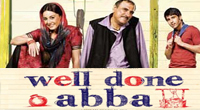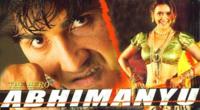The examples and perspective in this article may not represent a worldwide view of the subject. (July 2012) (Learn how and when to remove this template message) |





The right of asylum (sometimes called right of political asylum, from the Ancient Greek word ??????) is an ancient juridical concept, under which a person persecuted by his own country may be protected by another sovereign authority, such as another country or church official, who in medieval times could offer sanctuary. This right was already recognized by the Egyptians, the Greeks, and the Hebrews, from whom it was adopted into Western tradition. René Descartes fled to the Netherlands, Voltaire to England, and Thomas Hobbes to France, because each state offered protection to persecuted foreigners.
The Egyptians, Greeks, and Hebrews recognized a religious "right of asylum", protecting criminals (or those accused of crime) from legal action to some extent. This principle was later adopted by the established Christian church, and various rules were developed that detailed how to qualify for protection and what degree of protection one would receive.
The Council of Orleans decided in 511, in the presence of Clovis I, that asylum could be granted to anyone who took refuge in a church or on church property, or at the home of a bishop. This protection was extended to murderers, thieves and adulterers alike.
That "Everyone has the right to seek and to enjoy in other countries asylum from persecution" is enshrined in the United Nations Universal Declaration of Human Rights of 1948 and supported by the 1951 Convention Relating to the Status of Refugees and the 1967 Protocol Relating to the Status of Refugees. Under these agreements, a refugee is a person who is outside that person's own country's territory owing to fear of persecution on protected grounds, including race, caste, nationality, religion, political opinions and participation in any particular social group or social activities.
Contents
Medieval England
This article needs additional citations for verification. (December 2012) (Learn how and when to remove this template message) |
In England, King Æthelberht of Kent proclaimed the first Anglo-Saxon laws on sanctuary in about 600 CE. However Geoffrey of Monmouth in his Historia Regum Britanniae (c. 1136) says that the legendary pre-Saxon king Dunvallo Molmutius (4th/5th century BCE) enacted sanctuary laws among the Molmutine Laws as recorded by Gildas (c. 500–570). The laws of king Ethelred used the term grith . By the Norman era that followed 1066, two kinds of sanctuary had evolved: all churches had the lower-level powers and could grant sanctuary within the church proper, but the broader powers of churches licensed by royal charter extended sanctuary to a zone around the church. At least twenty-two churches had charters for this broader sanctuary, including
- Battle Abbey
- Beverley (see image, right)
- Colchester
- Durham, England
- Hexham
- Norwich
- Ripon
- Wells Cathedral
- Winchester Cathedral
- Westminster Abbey
- York Minster
Sometimes the criminal had to get to the chapel itself to be protected, or ring a certain bell, hold a certain ring or door-knocker, or sit on a certain chair ("frith-stool"). Some of these items survive at various churches. Elsewhere, sanctuary held in an area around the church or abbey, sometimes extending in radius to as much as a mile and a half. Stone "sanctuary crosses" marked the boundaries of the area; some crosses still exist as well. Thus it could become a race between the felon and the medieval law officers to the nearest sanctuary boundary. Serving of justice upon the fleet of foot could prove a difficult proposition.
Church sanctuaries were regulated by common law. An asylum seeker had to confess his sins, surrender his weapons, and permit supervision by a church or abbey organization with jurisdiction. Seekers then had forty days to decide whether to surrender to secular authorities and stand trial for their alleged crimes, or to confess their guilt, abjure the realm, and go into exile by the shortest route and never return without the king's permission. Those who did return faced execution under the law and/or excommunication from the Church.
If the suspects chose to confess their guilt and abjure, they did so in a public ceremony, usually at the church gates. They would surrender their possessions to the church, and any landed property to the crown. The coroner, a medieval official, would then choose a port city from which the fugitive should leave England (though the fugitive sometimes had this privilege). The fugitive would set out barefooted and bareheaded, carrying a wooden cross-staff as a symbol of protection under the church. Theoretically they would stay to the main highway, reach the port and take the first ship out of England. In practice, however, the fugitive could get a safe distance away, abandon the cross-staff and take off and start a new life. However, one can safely assume the friends and relatives of the victim knew of this ploy and would do everything in their power to make sure this did not happen; or indeed that the fugitives never reached their intended port of call, becoming victims of vigilante justice under the pretense of a fugitive who wandered too far off the main highway while trying to "escape."
Knowing the grim options, some fugitives rejected both choices and opted for an escape from the asylum before the forty days were up. Others simply made no choice and did nothing. Since it was illegal for the victim's friends to break into an asylum, the church would deprive the fugitive of food and water until a decision was made.
Henry VIII changed the rules of asylum, reducing to a short list the types of crimes for which people were allowed to claim asylum. The medieval system of asylum was finally abolished entirely by James I in 1623.
During the Wars of the Roses, when the Yorkists or Lancastrians would suddenly get the upper hand by winning a battle, some adherents of the losing side might find themselves surrounded by adherents of the other side and not able to get back to their own side. Upon realizing this situation they would rush to sanctuary at the nearest church until it was safe to come out. A prime example is Queen Elizabeth Woodville, consort of Edward IV of England.
In 1470, when the Lancastrians briefly restored Henry VI to the throne, Queen Elizabeth was living in London with several young daughters. She moved with them into Westminster for sanctuary, living there in royal comfort until Edward IV was restored to the throne in 1471 and giving birth to their first son Edward V during that time. When King Edward IV died in 1483, Elizabeth (who was highly unpopular with even the Yorkists and probably did need protection) took her five daughters and youngest son (Richard, Duke of York) and again moved into sanctuary at Westminster. To be sure she had all the comforts of home, she brought so much furniture and so many chests that the workmen had to knock holes in some of the walls to get everything in fast enough to suit her.
Modern political asylum
This article needs additional citations for verification. (February 2010) (Learn how and when to remove this template message) |
Article 14 of the Universal Declaration of Human Rights states that "Everyone has the right to seek and to enjoy in other countries asylum from persecution." The United Nations 1951 Convention Relating to the Status of Refugees and the 1967 Protocol Relating to the Status of Refugees guides national legislation concerning political asylum. Under these agreements, a refugee (or for cases where repressing base means has been applied directly or environmentally to the refugee) is a person who is outside that person's own country's territory (or place of habitual residence if stateless) owing to fear of persecution on protected grounds. Protected grounds include race, caste, nationality, religion, political opinions and membership and/or participation in any particular social group or social activities. Rendering true victims of persecution to their persecutor is a violation of a principle called non-refoulement, part of the customary and trucial Law of Nations.
These are the accepted terms and criteria as principles and a fundamental part in the 1951 United Nations Convention Relating to the Status of Refugees non-refoulement order.
Since the 1990s, victims of sexual persecution (which may include domestic violence, or systematic oppression of a gender or sexual minority) have come to be accepted in some countries as a legitimate category for asylum claims, when claimants can prove that the state is unable or unwilling to provide protection.
Right of asylum by country of refuge

Request Movie Now
Watch movie Political Asylum online on Amazon
Watch movie Political Asylum online
Watch The Movie On PrimeLucky: No Time For Love Full HD Movie Download

Well Done Abba Full HD Movie Download

The Hero-Abhimanyu Full HD Movie Download

Paying Guest Full HD Movie Download

Pratighat Full HD Movie Download

Nazrana (1987) Full HD Movie Download
.jpg)
Yash (1996) Full HD Movie Download
.jpg)
Kaccha Yauvan Full HD Movie Download

Rashtram Full HD Movie Download

Adirindi Gurui Full HD Movie Download

Rojavanam Full HD Movie Download

Shavukaru Full HD Movie Download

The Hangover Full HD Movie Download

Harry Potter and the Chamber of Secrets Full HD Movie Download

Dark Water Full HD Movie Download

Aaryan Full HD Movie Download

Sundarimare Sookshikkuka Full HD Movie Download

Deham Full HD Movie Download

Police Ante Veederaa Full HD Movie Download

Manmadha Ravulakosam Full HD Movie Download

Devadasu Malli Puttadu Full HD Movie Download

Download latest Movie from bollywood
- 1> baaghi 3
- 2> THE SKY IS PINK MOVIE FULL STORY AND REVIEW
- 3> Luka Chuppi
- 4> TO ALL THE BOYS I’VE LOVED BEFORE
- 5> Kabir Singh
- 6> Street Dancer 3D
- 7> Simmba
- 8> Gone Girl
- 9> The Girl Who Lived
- 10> Ludo
- 11> DILWALE DULHANIA LE JAYENGE
- 12> GUILTY
- 13> The Godfather
- 14> Adventures of Rusty
- 15> Sooryavanshi
- 16> Satyameva Jayate 2
- 17> Thappad
- 18> Bhool Bhulaiyaa 2
- 19> KGFChapter 2
- 20> Mardaani 2
- 21> Pinjar
- 22> Shivaji maharaj
- 23> Ek Villian 2
- 24> Hungama 2
- 25> Divergent
- 26> Mumbai Saga
- 27> The Internship
- 28> HIT (telugu)
- 29> Panga
- 30> The perfect date
- 31> 16 December
- 32> Gopala Gopala (Telugu)
- 33> Brahmastra
- 34> Gangubai Kathiawadi
- 35> Manmadhudu
- 36> Nenu local
- 37> Mahanati
- 38> Shatamanam bavathi
- 39> Lagaan
- 40> After
- 41> MOM
- 42> Shamshera
- 43> Raguvaran BTech
- 44> Khakee
- 45> The villain
- 46> OM
- 47> Mr. perfect
- 48> Bueatifull mind
- 49> Hichki
- 50> Gabbar Singh
- 51> Jogi
- 52> Before Sunrise
- 53> Before Sunset
- 54> Before Midnight
- 55> The Big Bull
- 56> Top Gun: Maverick
- 57> The Purge
- 58> The Sky is Pink
- 59> Laxmmi Bomb
- 60> Sadak 2
- 61> Sufna
- 62> Prithviraj
- 63> PK
- 64> Coolie No 1(2020)
- 65> Black Widow
- 66> Dear Zindagi
- 67> Dil Bechara
- 68> PHIR HERA PHERI
- 69> WAR
- 70> Dostana
- 71> RRR: Roudram Ranam Rudhiram
- 72> Maidan
- 73> Dabbang 3
- 74> Chhalaang
- 75> life as we know it
- 76> SherShaah
- 77> Sandeep Aur Pinky Faraar
- 78> Event Horizon
- 79> 83
- 80> Radhe: Your Most Wanted Bhai
- 81> Gunjan Saxena: The Kargil Girl
- 82> Mr India
- 83> Vivah
- 84> Anokha Bandhan
- 85> Ghost
- 86> Bhoot: Part One - The Haunted Ship
- 87> Haseen Dilruba
- 88> Laal Singh Chaddha
- 89> Qismat
- 90> Rajput
- 91> Drive
- 92> Dil Chahta Hai
- 93> Dil Ki Baazi
- 94> Dil Ka Rishta
- 95> Teesri Manzil
- 96> Dil
- 97> Love Aaj Kal
- 98> Khaali Peeli
- 99> Bunty Aur Babli 2
- 100> Atrangi Re
- 101> Gulabo Sitabo
- 102> Jodi
- 103> Suraj Pe Mangal Bhari
- 104> Deewana
- 105> Attack
- 106> Sardar Udham Singh
- 107> Toofan
- 108> THE LOVEBIRDS
- 109> Jersey
- 110> Ginny Weds Sunny
- 111> Thalaivi
- 112> Shiddat
- 113> Angels vs Zombies
- 114> Koi Mil Gya
- 115> Thank God
- 116> Bhuj: The Pride of India
- 117> Hum Aapke Hain Kaun
- 118> The Platform
- 119> Bird Box
- 120> Roohi Afzana
- 121> Torbaaz
- 122> Nikamma
- 123> World War Z
- 124> Extraction
- 125> Train to Busan
- 126> Life of Pi
- 127> SHAADI MEIN JROOR AANA
- 128> Himmat Aur Mehnat
- 129> To All The Boys: P.S. I Still Love You
- 130> Mimi
- 131> Good Newwz
- 132> Shubh Mangal Zyada Saavdhan
- 133> Raabta
- 134> Harry Potter and the Philosopher's Stone
- 135> Harry Potter and the Chamber of Secrets
- 136> Chhapaak
- 137> War of the Worlds
- 138> Harry Potter and the Prisoner of Azkaban
- 139> Harry Potter and the Goblet of Fire
- 140> MURDER MYSTERY
- 141> Shakuntala Devi
- 142> Bachchan Pandey
- 143> Jayeshbhai Jordar
- 144> Sheer Qorma
- 145> Saina
- 146> 'O' Pushpa I hate tears
- 147> Kedarnath
- 148> MS Dhoni The Untold Story
- 149> Chhichhore
- 150> Badhaai Ho
- 151> Unstoppable
- 152> Oz the Great And Powerful
- 153> The Girl on the Train
- 154> Haathi Mere Saathi 2020
- 155> The Conjuring: The Devil Made Me Do It
- 156> Gandhi Se Pehle Gandhi
- 157> The Song of Scorpions
- 158> Srimanthudu
- 159> Hello Guru Prema Kosame
- 160> Beauty and The Beast
- 161> Black Panther
- 162> Charlie and the Chocolate Factory
- 163> Bole Chudiyan
- 164> Fidaa
- 165> Duvvada Jagannadham
- 166> Bruce Lee: The Fighter
- 167> Hyper
- 168> Yaara
- 169> Red (2020)
- 170> Shivam
- 171> That Is Mahalakshmi
- 172> Nishabdham
- 173> Aashram 2020 web series
- 174> Laxmii
- 175> Mismatched
- 176> STUDENT OF THE YEAR 2
- 177> NAIL POLISH
- 178> Ramprasad Ki Tehrvi
- 179> KAAGAZ
- 180> 12 o Clock
- 181> The Power
- 182> bolo hau
- 183> Tribhanga
- 184> JAMUN
- 185> Madam Chief Minister
- 186> Maasaab
- 187> Aadhaar
- 188> Tanhaji
- 189> Bhaagi 3
- 190> Bhootnath
- 191> MALANG
- 192> Jai Mummy Di
- 193> Haathi Mere Saathi 2021
- 194> Shakeela
- 195> Unpaused
- 196> Annayya
- 197> Vamsoddharakudu
- 198> Mrugaraju
- 199> Narasimha Naidu
- 200> Sankranti
- 201> Manasu Maata Vinadhu
- 202> Anjaane
- 203> Apaharan
- 204> Bachke Rehna Re Baba
- 205> Bewafaa
- 206> Roohi
- 207> Radhe
- 208> Zindagi Khoobsoorat Hai
- 209> Yeh Mohabbat Hai
- 210> Yeh Kya Ho Raha Hai?
- 211> The Tomorrow War
- 212> DehradunDiary
- 213> Meri Shaadi Karaoo
- 214> Matruu Ki Bijlee Ka Mandola
- 215> No One Killed Jesica
- 216> Aag Ka Goola
- 217> Eight Million Dollars
- 218> Three Hundred
- 219> Cats and Dog
- 220> Decoy
- 221> Gold Rush
- 222> You Have Got Mail
- 223> Final Destination three
- 224> Tofan
- 225> Jungle
Request for Download movie Political Asylum
- Bollywood movies
- Latest Bollywood movies
- Download all bengali movies
- Download all bhojpuri movies
- Download all english movies
- Download all gujarati movies
- Download all hindi movies
- Download all kannada movies
- Download all malayalam movies
- Download all marathi movies
- Download all oriya movies
- Download all punjabi movies
- Download all tamil movies
- Download all telugu movies
- Bollywood action movies
- Bollywood adventure movies
- Bollywood animation movies
- Bollywood classical movies
- Bollywood comedy movies
- Bollywood crime movies
- Bollywood devotional movies
- Bollywood documentary movies
- Bollywood drama movies
- Bollywood family movies
- Bollywood fantasy movies
- Bollywood historical movies
- Bollywood history movies
- Bollywood horror movies
- Bollywood musical movies
- Bollywood mystery movies
- Bollywood mythological movies
- Bollywood patriotic movies
- Bollywood romance movies
- Bollywood romantic movies
- Bollywood sci-fi movies
- Bollywood social movies
- Bollywood spiritual movies
- Bollywood sports movies
- Bollywood suspense movies
- Bollywood thriller movies
- Bollywood war movies
- Hot actress list
- Hot gujarati actress list
- Hot tamil actress list
- Hot bhojpuri actress list
- Hot assam actress list
- Hot bihari actress list
- Hot jammu and kashmir actress list
- Hot gujarati actress list
- Hot haryana actress list
- Hot konkani actress list
- Hot marathi actress list
- Hot odia actress list
- Hot punjabi actress list
- Hot rajasthani actress list
- Hot kannada actress list
- Hot malayalam actress list
- Hot telugu actress list
- Hot tulu actress list
- Hot Actress list from Indian city
- Hot actress list from ahmedabad
- Hot actress list from alappuzha
- Hot actress list from bangalore
- Hot actress list from bangalore
- Hot actress list from bhopal
- Hot actress list from chandigarh
- Hot actress list from chennai
- Hot actress list from guwahati
- Hot actress list from hyderabad, india
- Hot actress list from indore
- Hot actress list from jaipur
- Hot actress list from kannur
- Hot actress list from kochi
- Hot actress list from kolkata
- Hot actress list from kollam
- Hot actress list from kottayam
- Hot actress list from kozhikode
- Hot actress list from lucknow
- Hot actress list from madurai
- Hot actress list from mangalore
- Hot actress list from mumbai
- Hot actress list from mysore
- Hot actress list from new delhi
- Hot actress list from patna
- Hot actress list from pune
- Hot actress list from thiruvananthapuram
- Hot actress list from thrissur
- Hot actress list from tiruchirappalli
- Hot actress list from vijayawada
- Hot actress list from visakhapatnam
- All Bollywood Movies
- Bollywood Celeb
- >Art Director
- >Audiography
- >Background Music
- >Banner
- >Choreographer
- >Cinematographer
- >Costume Designer
- >Dialogue Writer
- >Director
- >Distributor
- >Editor
- >Executive Producer
- >Hair Stylist
- >Lyricist
- >Music Director
- >Photographer
- >Playback Singers
- >Presenter
- >Producer
- >Production Company
- >Production Designer
- >Screenplay
- >Singer
- >Sound
- >Actor
- >Story Writer
- >Studio
- >Video Director
- >Miscellaneous
- >Publicity (pro)
- >Web Creator
- >Production Labs
- >Publicity Design
- >Publicity Stills
- >Writer
- >Miscellaneous Artists
- >Visual Effects
- >Reporter
- >Music Company
- >Shooting Studios
- >Picturised On
- >Line Producer
- >Co Producer
- >Asst Director
- >Casting Director
- >Cinematography
- >Choreography
- >Dialouge
- >Editing
- >Lyrics
- >Music
- >Story
- >Playback Singer Female
- >Playback Singer Male
- >Actor In A Comic Role (male/female)
- >Child Artiste
- >Ensemble Cast
- >Actor Popular Choice (male)
- >Actor Popular Choice (female)
- >Sa Re Ga Ma Pa Song Of The Year
- >Actor In Supporting Role
- >Actress In Supporting Role
- >Actor In Leading Role
- >Art Direction
- >Actress In Leading Role
- >Sound Recording
- >Costume Design
- >Special Effects
- >Action
- >Actor In A Negative Role
- >Lifetime Achievement Award
- >Cinematic Exellence (director)
- >Cinematic Exellence (male)
- >Cinematic Exellence (female)
- >International Male Icon
- >International Female Icon
- >Actor In A Supporting Role (male)
- >Actor In A Supporting Role (female)
- >Actor In A Comic Role
- >Playback Singer (male)
- >Playback Singer (female)
- >Most Promising Debut (female)
- >Most Promising Debut (male)
- >Most Promising Director
- >Sound Design
- >Lifetime Jodi
- >Marketed Film
- >Jury Award For Best Actor
- >Jury Award For Best Actress
- >Jury Award For Best Film
- >Jury Award For Best Director
- >Playback Singer(male)
- >Lifetime Acheivement Award (male)
- >Excellence Award
- >Jodi Award
- >Performer Of The Year
- >Presented By